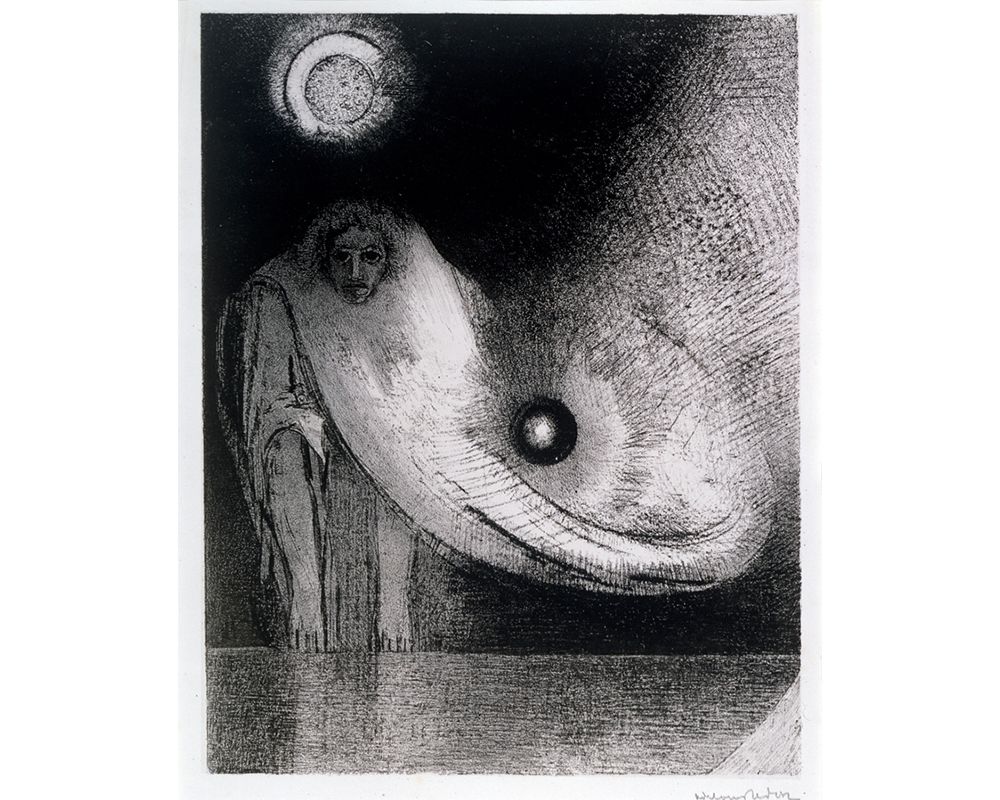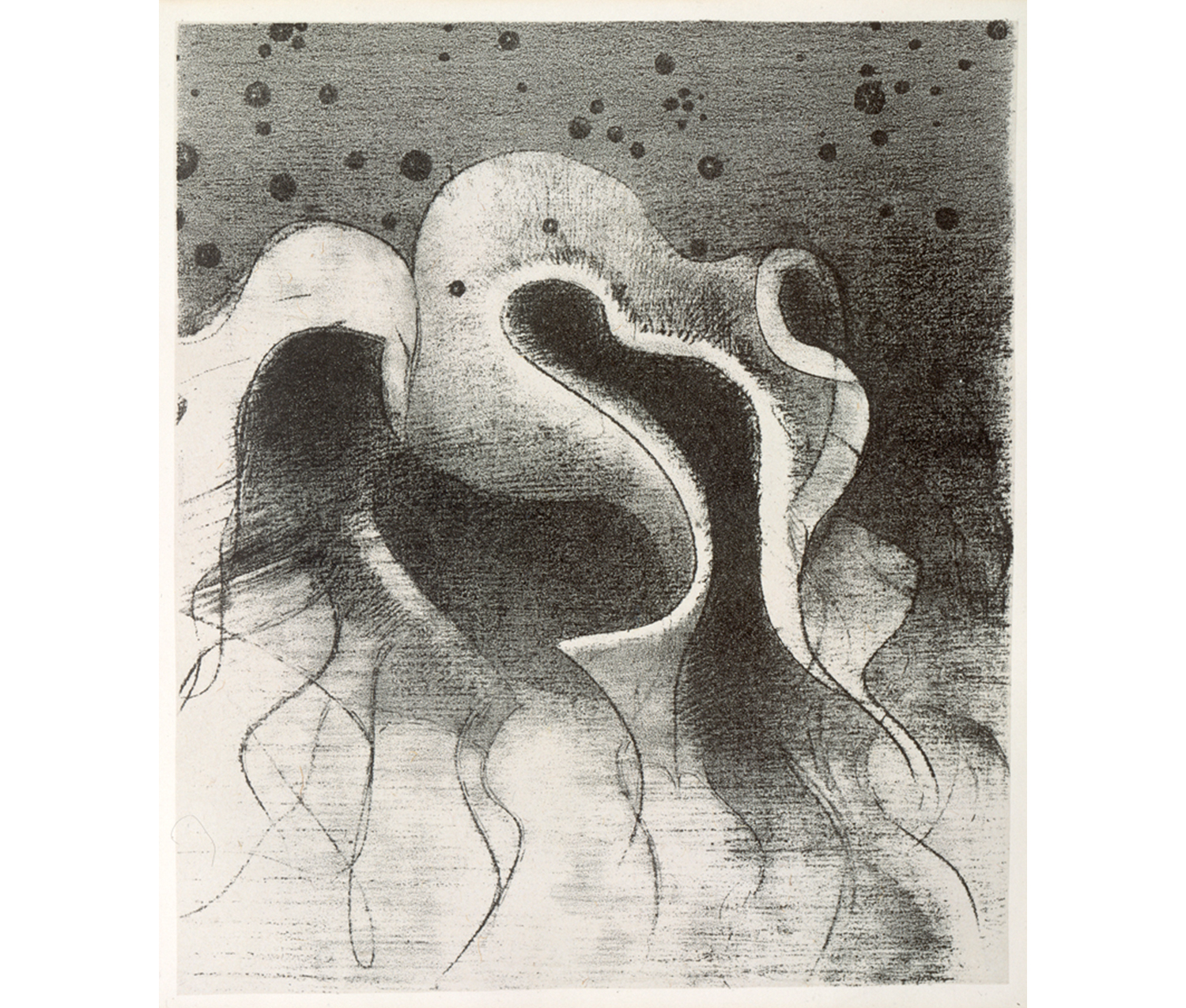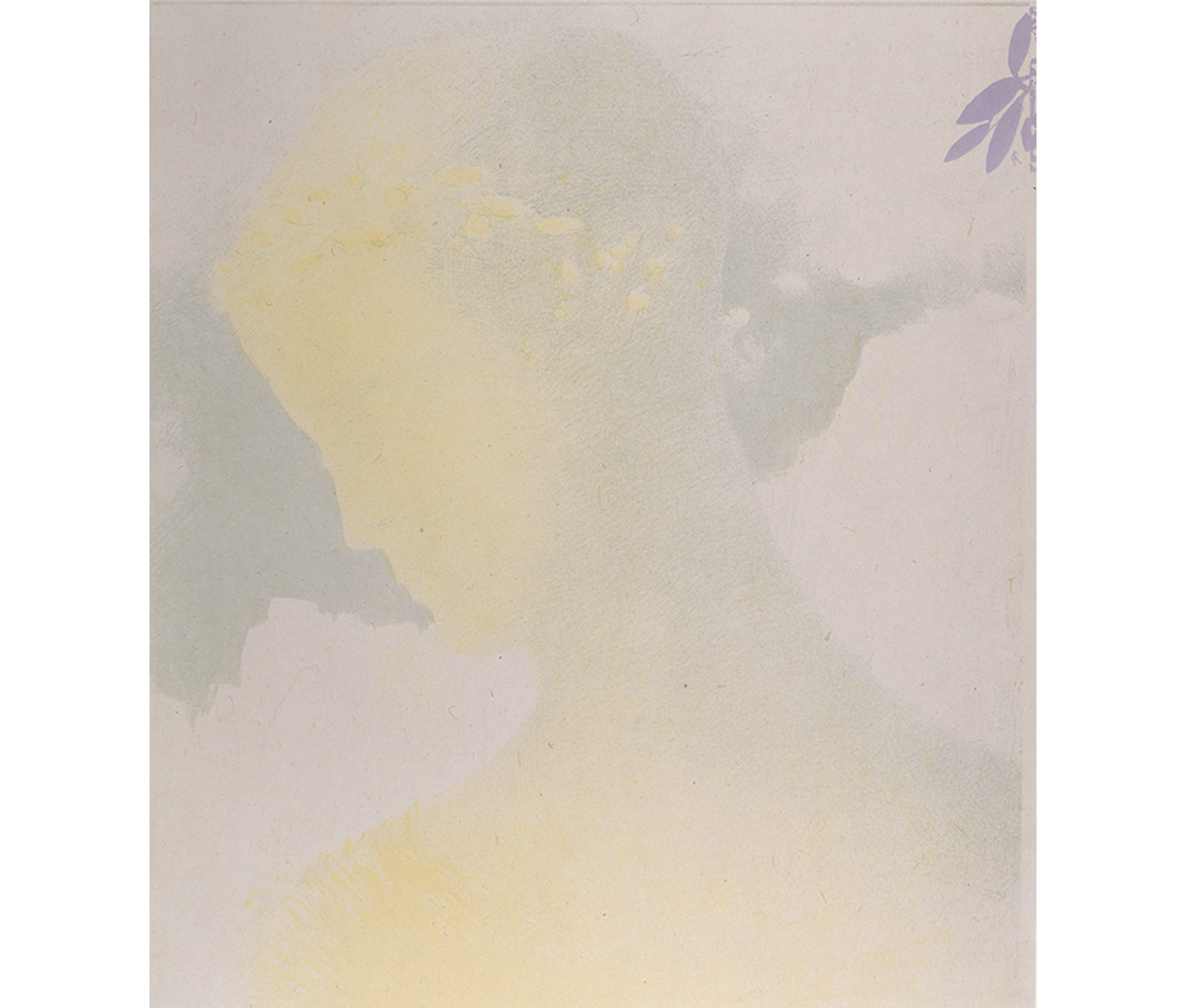
Surreal Dreams and Nightmares
Guest blogger Maggie Hoot is a Smith College student, class of 2016, with a major in Art History. She was a Student Assistant in the Cunningham Center for the Study of Prints, Drawings, and Photographs.
Odilon Redon was born in 1840, the same year as Monet and Rodin. Though he was a contemporary of the Realists and Impressionists, Redon took a very different path, both in becoming an artist and what he created. While the Realists and Impressionists were concerned with capturing what they saw and the present moment, Redon instead drew on his fantasies and dreams (and often nightmares).
Redon had a sickly and lonely childhood in the French countryside, which is considered the origin of his overactive imagination. In school, he tried and failed to become an architect and then had a disastrous stint studying painting under Jean-Léon Gérôme, a well-known Academic Painter. Only after serving as a soldier in the Franco-Prussian War did he become a professional artist, though he had dabbled for many years.
Though Redon came late to his profession, he took to it with a passion. Redon is considered one of the preeminent artists of Symbolist movement, which originally began in the 1880s as a French writers’ movement. Symbolists focused on crafting allusions and hints to a theme without stating the overarching message outright. The Symbolists often depicted literary, mythological, and religious scenes; Redon, however, drew on his imagination to interpret (rather than simply depict) sources to create what he believed were unique works, completely independent from the source material.

Odilon Redon. French, 1840–1916. ...Les bêtes de la mer rondes comme des outres, Plate 22 from La Tentation de Saint-Antoine, 1896. Lithograph printed in black on Chine appliqué on heavy white paper. Gift of Priscilla Paine Van der Poel, class of 1928. Photography by Petegorsky/Gipe. SC 1977.32.212.
His oeuvre can easily be divided into two periods. Initially, he worked only in black, using charcoal and lithography, saying that “One must admire black… It is an agent of the spirit far more than the fine color of the palette or the prism.” These works are known as his noirs. The second period of his artistic style was a drastic departure from his opinions of the first. In the 1890s, he began using bright pastels and oils in his works. He even colored in some of his old noirs so their former shading was completely obscured. While the noirs often felt nightmarish, the pastel works were more like surreal dreams, though still filled with the imaginative and invented characters present in his previous work.

Odilon Redon. French, 1840–1916. Printed by Auguste Clot. French, 1858–1936. Beatrice, 1897. Lithograph printed in color on chine appliqué paper. Gift of Selma Erving, class of 1927. Photography by Petegorsky/Gipe. SC 1978.1.40.
Redon was out of sync with his own time, but his work was loved by Fauvists such as Matisse, and served as inspiration for many in the Surrealist movement. Though well known during his lifetime, after his death, Redon’s influence dissipated and his name became relatively obscure. Redon has finally resurfaced in the public eye and is receiving long overdue attention for his enigmatic and influential works.